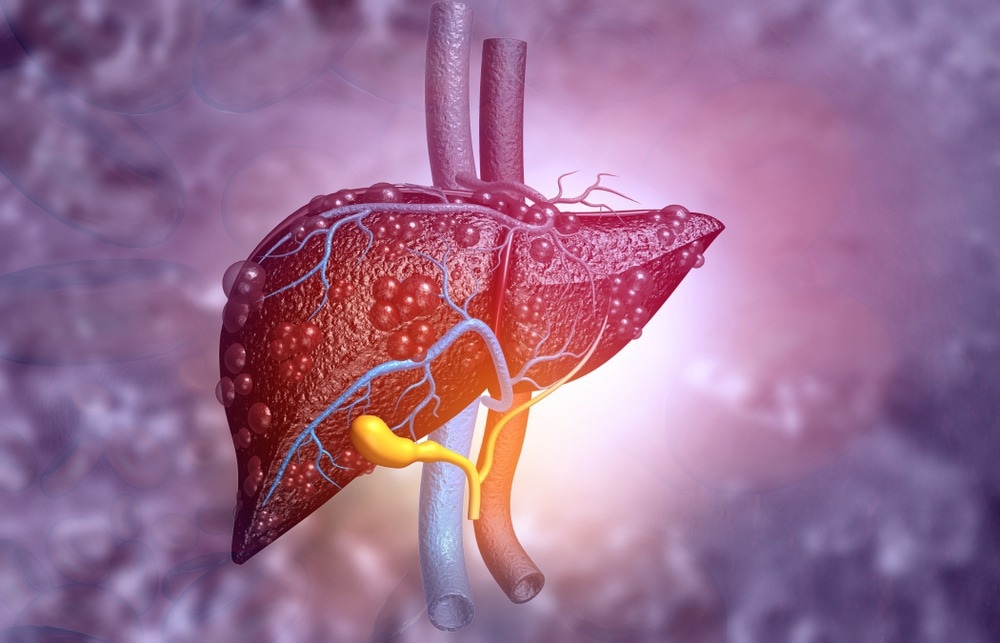In a recent study published in the British Medical Journal, researchers investigated the link between non-alcoholic fatty liver disease (NAFLD) in individuals with type 2 diabetes mellitus (T2DM) and all-cause death and cardiovascular disease. They found that individuals with NAFLD and T2DM show an increased risk of cardiovascular disease (CVD) and all-cause death.
 Study: Association of non-alcoholic fatty liver disease with cardiovascular disease and all cause death in patients with type 2 diabetes mellitus: nationwide population based study. Image Credit: Explode/Shutterstock.com
Study: Association of non-alcoholic fatty liver disease with cardiovascular disease and all cause death in patients with type 2 diabetes mellitus: nationwide population based study. Image Credit: Explode/Shutterstock.com
Background
The prevalence of NAFLD is on the rise globally and is often associated with metabolic disorders involving insulin resistance. It poses a significant health concern due to its potential to lead to liver complications and CVD, which is a leading cause of mortality, especially among NAFLD patients.
T2DM is a major risk factor for CVD and is closely linked to higher NAFLD prevalence and severity. The complex relationship between NAFLD and T2DM suggests a synergistic effect on cardiovascular risk, with a substantial proportion of T2DM patients also having NAFLD. However, studies examining their association with CVD have yielded mixed results. While some found no correlation, others demonstrated a doubled risk of CVD in T2DM patients with NAFLD compared to those without. Additionally, previous studies were limited by their cross-sectional designs and small sample sizes.
To address this gap, researchers in the present study aimed to assess the risk of CVD and all-cause mortality associated with NAFLD in T2DM patients using a large-scale, population-based longitudinal approach.
About the study
This nationwide cohort study utilized data from the National Health Information Database linked t the National Health Screening Program. The exclusion criteria were age ≤ 20 years, consumption of ≥30 g/day alcohol, missing data, or a history of type 1 diabetes mellitus, chronic hepatitis B, and C, liver cirrhosis, hepatocellular carcinoma, or CVD. Additionally, patients who developed CVD within one year were also excluded.
A total of 7,796,763 participants were selected, and the endpoint was the occurrence of all-cause death, CVD, or until 31 December 2018. CVD included myocardial infarction or ischemic stroke, confirmed through hospital admissions with corresponding claims for brain magnetic resonance imaging or computed tomography. The patients were followed-up for a median of 8.13 years.
Data on anthropometric measurements and laboratory parameters were collected. Blood pressure was measured in a seated position, and fasting venous blood samples were taken to assess various parameters, including glucose, liver enzymes, lipid profile, and creatinine levels. Additionally, the estimated glomerular filtration rate was determined.
Information on lifestyle factors such as smoking, alcohol consumption, regular exercise, and socioeconomic status was obtained through a standardized self-assessment questionnaire. Statistical methods included Cox proportional hazards models adjusted for various factors, Kaplan-Meier survival curves, and subgroup analyses.
Results and discussion
Among the participants, 6.49% of the participants had T2DM. Grade 1 and 2 NAFLD were found in 22.04% and 11.11% of participants, respectively. A higher proportion of T2DM patients had grade 2 NAFLD (26.73%) and grade 1 NAFLD (34.06%) compared to those without T2DM. Among participants with T2DM, 6.77% had CVD, and about 8.38% of participants died. In contrast, among those without T2DM, 2.24% had CVD, and about 2.71% of participants died.
Incidence rates for CVD, myocardial infarction, ischemic stroke, and all-cause mortality increased with the severity of NAFLD and were higher in patients with T2DM than in those without. Hazard ratios for these outcomes were also higher with grade 1 and grade 2 NAFLD compared to no NAFLD, regardless of T2DM status. Moreover, the five-year absolute risk for these outcomes increased with NAFLD severity, particularly in patients with T2DM. Risk differences for CVD, myocardial infarction, ischemic stroke, and all-cause death were higher between no NAFLD and grade 2 NAFLD than between no NAFLD and grade 1 NAFLD. Additionally, these risk differences were higher in patients with T2DM compared to those without T2DM.
NAFLD was linked to an increased risk of cardiovascular disease, myocardial infarction, ischemic stroke, and all-cause death in both T2DM and non-T2DM patients (p<0.001). Among NAFLD patients, those with grade 2 NAFLD exhibited the highest risk, followed by grade 1 NAFLD.
Further, the incidence rates of CVD, myocardial infarction, ischemic stroke, and all-cause death increased sequentially from no NAFLD to grade 1 NAFLD and to grade 2 NAFLD across all age groups, with higher rates observed in T2DM patients.
The study's limitations include the use of the fatty liver index for NAFLD definition, lack of assessment of glycated hemoglobin variability and changes in diabetes drugs, limited generalizability to other ethnicities, and the inability to evaluate hepatic fibrosis.
Conclusion
In conclusion, patients with T2DM and even mild NAFLD have a higher risk of cardiovascular disease and all-cause death. The risk gap between no NAFLD and grade 1 or grade 2 NAFLD is more significant in T2DM patients than in those without. The findings emphasize the need for NAFLD screening and prevention in T2DM patients to reduce subsequent cardiovascular risk and mortality.